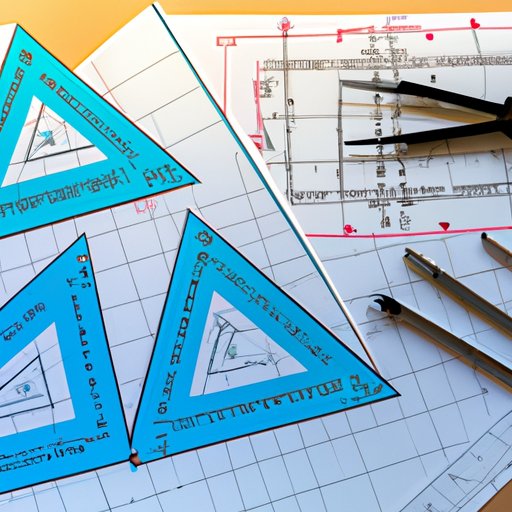I. Introduction
Architecture is much more than just a visually pleasing arrangement of shapes and spaces. It is a complex art and science that requires a deep understanding of various disciplines, such as engineering, physics, and mathematics. In this article, we will explore the role of math in architecture and discuss how it affects the design and construction of buildings.
Understanding the role of math in architecture is important for both architects and non-architects. For architects, it is vital to have a solid grasp of mathematical concepts and formulas in order to create sturdy and aesthetically appealing buildings. For non-architects, it is important to realize how math impacts our built environment and influences our daily lives.
II. The Mathematical Concepts Used in Architecture
Geometry, trigonometry, calculus, and algebra are just a few of the mathematical concepts used in architecture. These concepts, along with others, such as physics and engineering, are essential to creating good architecture.
Geometry is used to create shapes and forms, including curves, angles, and straight lines. Trigonometry is used to calculate the angles and dimensions of triangles, which are fundamental building blocks in architecture.
Calculus is used in optimization problems and helps architects determine the maximum and minimum of complex functions, enabling them to design structures that are both efficient and beautiful. Algebra is used in solving equations and manipulating formulas, which is useful in calculating quantities such as weights, areas, and volumes.
III. Real-Life Examples of Math in Architecture
Architects use math in their designs to ensure that their buildings are structurally sound, stable, and efficient. For example, they use math to calculate the load-bearing capacity of a beam or a column, the amount of materials needed for construction, and the correct angles for an arch or a dome.
In addition to these calculations, architects also use math to determine the natural light and air flow of a building, as well as the layout and proportions of rooms. These are just a few examples of how architects use math to create functional, comfortable, and visually pleasing spaces.
IV. The Role of Math in Historical and Contemporary Architecture
Throughout history, some of the world’s most famous architects have used math to create iconic structures that have stood the test of time. For example, Egyptian architects used geometry to build the pyramids, while Renaissance architects used perspective and proportion to create harmonious spaces.
Today, many architects continue to use math in their designs. For example, Zaha Hadid, a contemporary architect, uses complex geometries and mathematical equations to create futuristic buildings that challenge our perception of space and form.
V. Behind the Scenes: Interviews with Architects and Designers
Interviews with architects and designers reveal that math is an essential tool in their creative process. Many architects use computer software to perform complex calculations and generate 3D models of their designs. Others use mathematical formulas and equations to solve problems and create innovative design solutions.
One example of this is Daniel Libeskind who famously said, “mathematics is not only the language of science but also that of imagination.” He believes that math is the foundation of all art and that it enables architects to innovate and push boundaries in their work.
VI. The Importance of Math in Architectural Education
Architectural education requires a rigorous understanding of mathematical concepts. Architectural programs provide students with a thorough grounding in math, in subjects such as plane and solid geometry, trigonometry, calculus, and physics.
Architects in training learn how to use mathematical principles to create a cohesive and sustainable design. They are also taught how to use computer programs to model shapes and forms, analyze structures, and optimize building performances.
VII. The Future of Math in Architecture
As technology advances, architecture is becoming more reliant on computational design and mathematical models. Architects are increasingly using computer programs to simplify and automate complex mathematical calculations.
In the future, architects will continue to use math and computers in their designs, but they will also incorporate artificial intelligence and machine learning algorithms. These technologies will enable architects to develop more efficient and sustainable buildings while also creating structures that adapt to human needs.
VIII. Conclusion
In conclusion, math plays a critical role in architecture from the design stage to construction. It is a necessary tool for architects who wish to create successful and impactful buildings that shape our world.
As we move into the future, it is important to recognize the value of math in creating sustainable and innovative architecture. By continuing to develop and improve mathematical and computational tools, we can create more efficient, beautiful, and sustainable structures that enhance our lives.
(Note: Is this article not meeting your expectations? Do you have knowledge or insights to share? Unlock new opportunities and expand your reach by joining our authors team. Click Registration to join us and share your expertise with our readers.)
